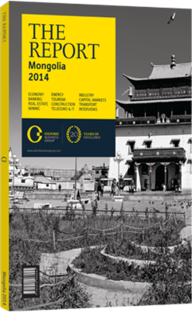A new start: Restarting the production of uranium
With the world’s 16th-largest proven uranium reserves according to the International Atomic Energy Agency’s 2011 Red Book, Mongolia is making progress to restart production and export for the first time since 1995.
Soviet geological surveys conducted nationwide over 20 years to 1990 revealed reserves in four key uranium provinces covering nine deposits and 100 occurrences, although Russian production of 535 tonnes over 1988-95 came from the open-pit mine in Dornod, in the north-eastern Saddle Hills area.
While production at the mine then stalled, exploration work has accelerated in the past decade. By 2012 some 16 foreign firms were engaged in exploration on 100 licences according to the Ministry of Mining, including France’s Areva through its exploration subsidiary CogeGobi, China National Nuclear Corporation, Russia’s Rosatom subsidiary AtomRedMetZoloto (ARMZ), and several independents including Canada’s Denison Mines, Solomon Resources and Red Hill Energy. While the Red Book reported proven reserves of 74,000 tonnes in 2011, this figure has grown with Areva’s recent discoveries reaching 135,000 tonnes by July 2013, according to the Ministry of Mining. The World Nuclear Association estimated in October 2013 that resources could reach 1.47m tonnes upon further exploration. Areva, which holds a quarter of licences in two provinces, holds the largest deposits, with 50,000 tonnes registered at Zoovch Ovoo in 2013 and 10,000 tonnes at Dulaan Uul in 2011. Dornod holds 28,000 tonnes proven, while other deposits are in the 5000-10,000 tonne range, too small for commercial production.
Strategic Deposits
The 2009 Nuclear Energy Law set up the Nuclear Energy Agency (NEA), the sector regulator, and MonAtom, a public body holding government stakes in uranium projects. The law categorised all uranium mines as strategic deposits. The aim is to attract further investment and develop the value chain. Canada-based Khan Resources held a 68% stake in the Dornod development since 2003, alongside ARMZ and MonAtom holding 21% each. A 2009 feasibility study by Khan revealed 24,780 tonnes of indicated resources and planned for production of 1150 tonnes per year over a 15-year period. Following Khan’s attempt to sell to a Chinese state-owned firm and an attempted hostile takeover by ARMZ in 2010, however, NEA announced new plans to exclude Khan and develop Dornod through MonAtom, which would hold 51%, in a joint venture (JV) with ARMZ, with a final deal signed in December 2010.
ARMZ planned investment of $200m to develop a 2000-tonne-a-year mine, yet Khan appealed to international arbitration for $326m in compensation with the World Bank’s International Centre for Settlement of Investment Disputes, ruling it had jurisdiction to hear the case in 2012. The court will render a verdict after two post-hearing briefs are submitted by March 2014, with many observers expecting a verdict on the expropriation in favour of Khan.
Areva is progressing with its plans to develop the much-larger project in Sainshand, which should yield 2000-3000 tonnes per year production, roughly a 20th of current global output. In October a 66:34 JV between Areva and Japan’s Mitsubishi (Areva Mongol) established a JV with MonAtom called Areva Mines to develop the project in in-situ leeching. The venture expects first production by the end of the decade.
In-Situ Inputs
The use of in-situ leeching, the pumping of sulphuric acid in wells to extract uranium, a technique dominant in Kazakhstan, accounts for around 40% of global mining of the ore. In contrast to the open-pit mining practiced at Dornod, in-situ leeching presents a more environmentally friendly means of extraction and is most adapted to the Sainshand formation.
Yet the sulphuric acid requirements are significant, with at least 66 tonnes of acid needed for every tonne of uranium. A by-product of copper smelting, Mongolia could potentially produce the necessary amounts domestically if one of the two proposed smelters proceeds – at Erdenet copper mine or at Sainshand Industrial Park. To avoid relying on imports, another option would be to build an acid factory adjacent to the mine.
You have reached the limit of premium articles you can view for free.
Choose from the options below to purchase print or digital editions of our Reports. You can also purchase a website subscription giving you unlimited access to all of our Reports online for 12 months.
If you have already purchased this Report or have a website subscription, please login to continue.

